Vote NO tax hikes this November 2018
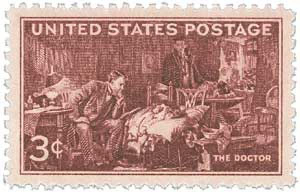 This fall the election ballot will have two chances to hike the taxes for Utah. As covered by the Deseret News, One is a sales tax hike from 4.7 to 4.85 percent for Medicaid, the other ten cents a gallon gasoline fuel tax for new education funding. The problem with both is they reverse the priorities, and will pull money away from medical education. We should Get the doctors, then spend the money. Nationally, and in Utah, there are fewer medical schools now than a century ago. Utah has 141 golf courses, and now graduates about 100 students a year. In four years, this number will go to 225. However both numbers are a third to half the number of law students graduated each year. Of the 750,000 physicians in the United States, a fouth are trained over seas, and half of those come from India and Pakistan, because they can speak English. The sales tax hike is supposed to fund Medicaid for about 100,000 patients annually. But not a dime for medical school seats. The Veterans Administration gual is one doctor for sixty patients. Thus the 100,000 Medicaid patients would need 1,667 new doctors in Utah, or the total Utah output for the next full decade. Allowing none to replace physicians who retire, move, or die. Let’s dedicate the money to medical school seats. The same problem exists with the gasoline tax, which is dedicated to new education funding, but not medical school seats. The gas tax is projected to pull out $120 million a year, directing to public education but not a dime for medical school students.
This fall the election ballot will have two chances to hike the taxes for Utah. As covered by the Deseret News, One is a sales tax hike from 4.7 to 4.85 percent for Medicaid, the other ten cents a gallon gasoline fuel tax for new education funding. The problem with both is they reverse the priorities, and will pull money away from medical education. We should Get the doctors, then spend the money. Nationally, and in Utah, there are fewer medical schools now than a century ago. Utah has 141 golf courses, and now graduates about 100 students a year. In four years, this number will go to 225. However both numbers are a third to half the number of law students graduated each year. Of the 750,000 physicians in the United States, a fouth are trained over seas, and half of those come from India and Pakistan, because they can speak English. The sales tax hike is supposed to fund Medicaid for about 100,000 patients annually. But not a dime for medical school seats. The Veterans Administration gual is one doctor for sixty patients. Thus the 100,000 Medicaid patients would need 1,667 new doctors in Utah, or the total Utah output for the next full decade. Allowing none to replace physicians who retire, move, or die. Let’s dedicate the money to medical school seats. The same problem exists with the gasoline tax, which is dedicated to new education funding, but not medical school seats. The gas tax is projected to pull out $120 million a year, directing to public education but not a dime for medical school students.
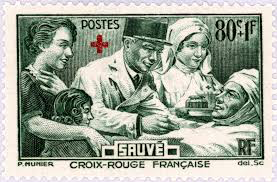 Croix-Rouge Francaise Sauve Postes 80 C+1F.
Croix-Rouge Francaise Sauve Postes 80 C+1F.
The problem with doctor shortage is being written about for generations. Consider portions of this article from the Deseret News December 13, 2009. Amy Choate Nielsen – Death of the Family Practice Doctors struggling to survive in face of mounting obstacles. Like many family physicians, the preventive care he provides can save thousands of dollars for patients who don’t wait for their maladies to become emergencies before they seek help. But these days, it’s tough to be an old-fashioned family doctor. The reputation of long hours, relatively low pay and potential for failure associated with primary care is enough to turn many doctors away from the field. At the same time, the population continues to grow, and more and more family doctors are retiring. In the end, this means more Americans will have less access to primary care doctors. And less access could mean increased sickness and required costly treatments, doctors say.It’s estimated that by 2020, Utah will have a 40 percent reduction of its family physician work force, according to the Utah Medical Education Council. Nationwide, a deficit of 85,000 to 96,000 physicians is anticipated by 2020, according to the Council on Graduate Medical Education. “There is something of a crisis in family practice, and doctors coming out of medical school have heard of these problems, and they’re just not choosing family practice to go into,” said Mark Fotheringham, Utah Medical Association spokesman. “You have to be really dedicated to the practice itself.” Although there is a growing need for primary care doctors in America, it is hard for them to establish their own practices, as the case of [Dr. Joseph] Kasper illustrates.
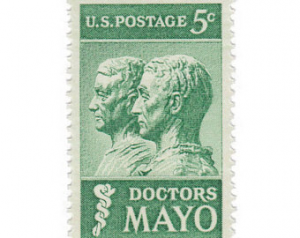 Family doctors also make less money than specialists, and they’re leaving medical school with more debt. The median income of family doctors in the Western mountain region, which includes Utah, is $140,000, according to a study by the American Academy of Family Physicians. On average, family physicians finish medical school with about $200,000 of debt. To start a practice, doctors often will need to take out more loans, if they can get them, to cover their costs that proliferate until soon, not even a growing patient clientele is enough to pay the bills.
Family doctors also make less money than specialists, and they’re leaving medical school with more debt. The median income of family doctors in the Western mountain region, which includes Utah, is $140,000, according to a study by the American Academy of Family Physicians. On average, family physicians finish medical school with about $200,000 of debt. To start a practice, doctors often will need to take out more loans, if they can get them, to cover their costs that proliferate until soon, not even a growing patient clientele is enough to pay the bills.
“With a family physician, you see the same person over and over, and it’s easier to build up relationships with that kind of doctor and build the trust that make medicine the really enjoyable thing that it is,” Fotheringham said. “But when it’s hard to keep the doors open, you have a quandary to deal with.”
1947 Doctors Mayo 5 C U.S. Postage
Dr. Mary Walker Army Surgeon Medal of Honor USA 20C
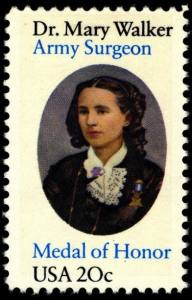 Instead of using primary care doctors to oversee their treatment, patients are increasingly seeking dermatologists for skin maladies, urologists for bladder problems and cardiologists for heart trouble with increasingly fragmented care. But studies show overall health declines when a multitude of doctors are concentrating on separate specific areas of the body, says Dr. Jennifer Leiser, president of the Utah chapter of the American Academy of Family Physicians.
Instead of using primary care doctors to oversee their treatment, patients are increasingly seeking dermatologists for skin maladies, urologists for bladder problems and cardiologists for heart trouble with increasingly fragmented care. But studies show overall health declines when a multitude of doctors are concentrating on separate specific areas of the body, says Dr. Jennifer Leiser, president of the Utah chapter of the American Academy of Family Physicians.
She says part of the problem with our current health care system is that is increasingly becoming procedure-based.
“Procedures are paid a lot of money,” Leiser says. “Talking to a person and finding out what is wrong with them is not paid a lot of money.”
“If you look at systems around the world that are functioning well, they have a balance of primary care and specialists that is about 50/50. Currently, instead of 50/50, we have 70 percent specialists and 30 percent primary care and that ratio is going down. … It seems counterintuitive, but in areas where there are more primary care doctors, the mortality rates are better because there is better coordination of care by a doctor who knows the person and knows what they need.”
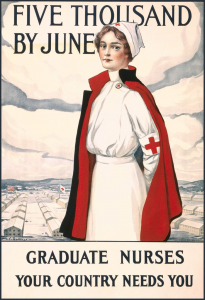 1917 Five Thousand by June Graduate Nurses Your Country Needs You
1917 Five Thousand by June Graduate Nurses Your Country Needs You
Price [Utah] already has a shortage of primary care doctors. Four family physicians cover an area of 40,000 people and recruiting is hindered by the lack of appeal that rural areas can have. The dearth puts added pressure on doctors who are there, but it also means that first-time patients have a hard time getting appointments.
They’re seen less, so they’re sicker, so they require more treatment, Radley says. When patients come to see her, they come to an office near the hospital where the walls are painted a soft beige and adorned with iron sconces. The waiting room is decorated with dried flowers and candles that make the air smell like perfume. Her equipment is state of the art — an investment she hopes will bring returns for many years to come.
In an adjoining room is the medical spa — complete with working fireplace — where you can pick a pedicure, massage, botox, liposuction or laser treatment from a menu of cosmetic services. Radley opened the spa in February 2008 to help pay the bills.
“I had to start thinking, ‘What else am I going to do?’ ” [Dr. Karen] Radley said. “Especially in this area. We’re all getting paid Medicaid and Medicare rates for everybody. You have to find an alternative on finances.”
The problem is, almost half of her patients are on Medicare and Medicaid, and those programs pay so little it barely covers the cost to open her door in the morning, Radley says.
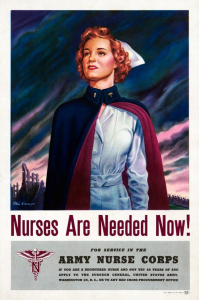 “Especially if they’re not getting paid well, why would you go into medicine?” Radley says. “Why would you invest 20 years of your life getting education to get paid the same as an accountant who doesn’t have to stay up at night and doesn’t have to worry about having somebody die in the bed while they’re examining them or taking care of them? It’s a lot of stress.”
“Especially if they’re not getting paid well, why would you go into medicine?” Radley says. “Why would you invest 20 years of your life getting education to get paid the same as an accountant who doesn’t have to stay up at night and doesn’t have to worry about having somebody die in the bed while they’re examining them or taking care of them? It’s a lot of stress.”
Nurses are Needed Now! For Service in the Army Nurse Corps if you are a registered nurse and not yet 40 years of age apply to the Surgeon General, United States Army Washington 25 D.C. or to any red cross procurement office.
Disclaimer: The author of each article published on this web site owns his or her own words. The opinions, beliefs and viewpoints expressed by the various authors and forum participants on this site do not necessarily reflect the opinions, beliefs and viewpoints of Utah Standard News or official policies of the USN and may actually reflect positions that USN actively opposes. No claim in public domain or fair use. © Edmunds Tucker.
Utah Standard News depends on the support of readers like you.
Good Journalism requires time, expertise, passion and money. We know you appreciate the coverage here. Please help us to continue as an alternative news website by becoming a subscriber or making a donation. To learn more about our subscription options or make a donation, click here.
To Advertise on UtahStandardNews.com, please contact us at: ed@utahstandardnews.com.


Comments - No Responses to “Vote NO tax hikes this November 2018”
Sure is empty down here...